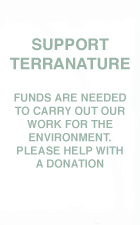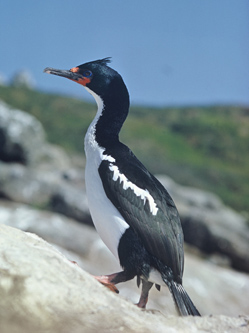Status of six birds improve and ten worsen in the latest New Zealand threatened species list
22 January 2007
The Department of Conservation recently released the 2005 New Zealand Threat Classification System list that updates the threatened status of 5,819 native plants and animals.
Forty-four species of plants and animals have had a significant change in their status since the previous list was produced in 2002. The threatened status of six birds has improved, and the status of ten has worsened.
The new listing for the Codfish Island fernbird Bowdleria punctata wilsoni (top left) is improved from 'nationally critical' to 'range restricted'. The original single population on Codfish Island has recovered following rat eradication, and a second population is established on another predator-free island.
The status of crested grebe Podiceps cristatus australis (left 2nd down) has been moved one step from 'nationally critical' to 'nationally endangered' after predator control at two breeding sites around Lake Pearson, and nesting islands on Lake Clearwater.
The New Zealand black-browed albatross Thalassarche impavida, also known as the Campbell mollymawk, has improved from 'Nationally vulnerable' to 'range restricted'. Recovery is thought to be associated with the reduction of fishing intensity in the mid-1980s.
The Black petrel Procellaria parkinsoni is improved from 'gradual decline' to 'range restricted'. There is no current evidence that the two populations on Little Barrier and Great Barrier Islands are continuing to decline. Cat removal has helped black petrel on Little Barrier Island.
In a positive change, the New Zealand storm-petrel Oceanites maorianis (left 3rd down) is now listed as 'nationally critical' after being 'extinct'. It was miraculously rediscovered in 2003 off the Coromandel Peninsula, after only being known from three museum specimens collected more than 150 years ago.
There have also been New Zealand storm-petrel sightings off Little Barrier Island in the Hauraki Gulf, and three birds were banded and fitted with transmitters in 2006 near the Hen and Chickens Islands, but their breeding location has not yet been found.
The masked booby Sula dactylatra fullageri (left bottom) is no longer 'nationally critical', and because it breeds only in the Kermadec Islands, and on Australia's Lord Howe Island, its status is 'range restricted'. The species Sula dactylatra has a large global range and is in decline but its IUCN Red List status is that of 'least concern'.
 |



